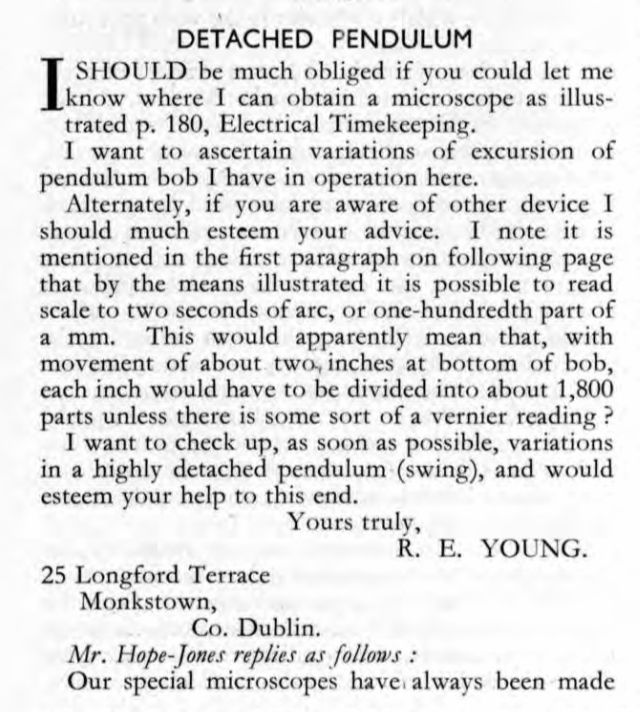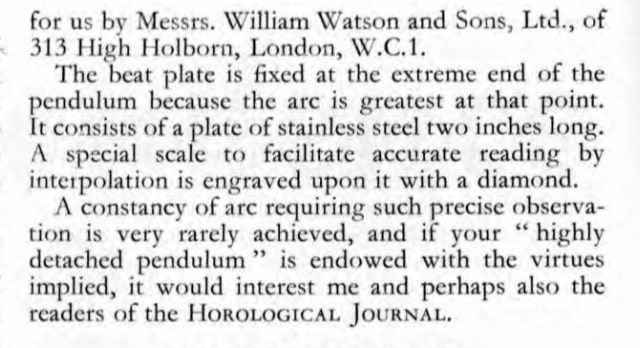JH – thanks for the links – very interesting articles.
Seems to me that there have historically been two rather different extremes in the approaches taken to building a precision pendulum clock – the Harrison approach, where he accepted that there were environmental and mechaninal effects that would affect the timekeeping and carefully balanced them in order to create an accurate clock, and the Shortt et al approach, where the pendulum was as far as possible isolated from mechanical and environmental effects and mostly left free to vibrate as it will.
My own rather amateurish messing around with a "free" pendulum that is electromagnetically impulsed under the control of a single board computer has led me to start thinking about a third possible approach which takes advantage of the processing power and electronic sensors that could be applied to the problem – measure the environmental factors that could affect the pendulum (temperature, pressure, humidity,…), feed those measurements into the SBC, and use its processing power to determine how much impulse to give to the pendulum in order to correct for the environmental effects. Even for the lowly BBC Micro Bit that I am using has add-on boards that will measure temperature, pressure, and humidity. Obviously the calculation is probably going to be non-trivial, and the details specific to a particular pendulum, but in principle…?
…or are you all way ahead of me…?
Edited By Tony Jeffree on 11/02/2023 12:13:30
John Haine.






